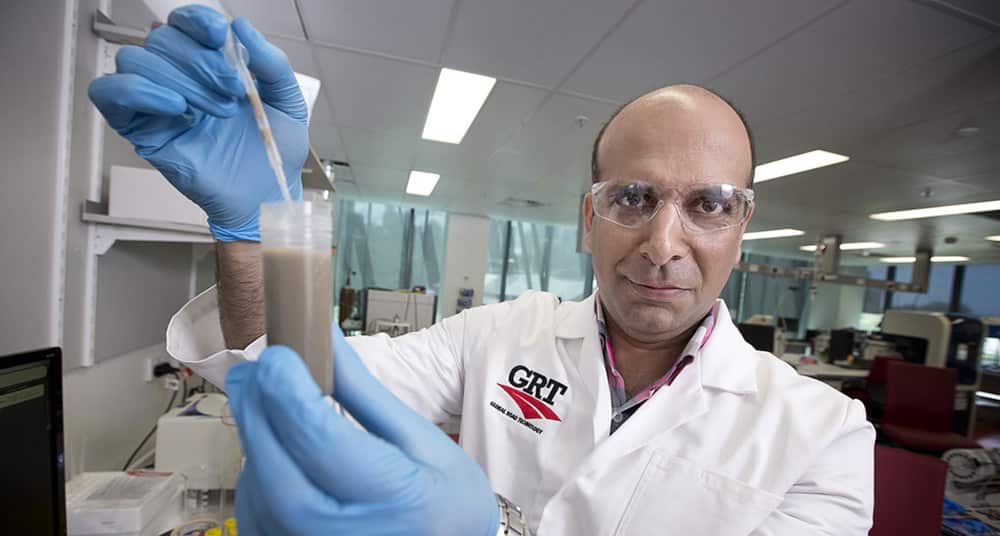

The goal was to overcome the shortcomings and improve properties of using cementitious materials alone. Polymer modified cement created by Global Road Technology is a combination of cementitious binder, GRT polymer, water and granular material. These components are mixed together and compacted in the early stages of the hydration process to form a pavement layer that is subsequently cured.
Hardened conventional cement paste has mainly an agglomerated structure of calcium silicate hydrates and calcium hydroxide bound together by the weak intermolecular forces. Consequently, microcracks occur easily in the cured material under stress. That is why ordinary cement mortar and concrete have poor tensile strength and fracture toughness. On the other side, in the polymer modified cement, it appears that the microcracks are bridged by the polymer films which prevent crack propagation, and simultaneously, a strong cement hydrate-aggregate bond is developed. Polymer membranes also add sealing effect to the formed structure and thus provide a considerable increase in waterproofness or watertightness, resistance to chloride ion penetration, moisture transmission, carbonation and oxygen diffusion, chemical resistance and freeze-thaw durability. Depending on traffic volumes and environmental conditions at the time, GRT polymer modified cement blend pavements can generally be trafficked immediately after final compaction.
Summarized processes for creation of polymer modified cement are as follows: After mixing with water, the cement paste particles start to hydrate and cement gel gradually forms on the surface of the cement particles. The unhydrated cement particles covered with cement gel is being enveloped with a closely packed layer of introduced polymer particles. The water removes by cement hydration and evaporation, and the closely packed polymer particles, positioned on the cement hydrates, integrate into continuous membranes. The membranes bind the cement hydrates together to form a monolithic network.
The binder should be added in sufficient quantity to balance both strength and shrinkage requirements to produce a bound material with significant tensile strength. In most cases, cementitious contents for GRT polymer mix designs are limited to 2 to 3%.
Advantages of GRT polymer modified cement when compared to conventional cement stabilised or treated pavements include:
Due to its advanced properties GRT polymer modified cement has numerous potential applications:
For more information regarding Global Road Technology or GRT Polymer Modified Cement please contact GRT.
Are environmental regulations, health and safety concerns or potential profit loss a concern right now?
Contact Us Now